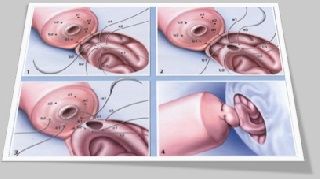A vasectomy is a surgical procedure that is used to permanently prevent pregnancy by cutting or blocking the vas deferens, the tubes that carry sperm from the testicles to the penis. A vasectomy reversal is a surgical procedure that reconnects the vas deferens to restore the flow of sperm. Robotic assisted vasectomy reversal (RAVR) is a newer technique that uses robotic technology to perform the procedure. This essay will discuss the benefits of RAVR over traditional vasectomy reversal techniques, including its success rates and reduced recovery times.
Benefits of Robotic Assisted Vasectomy Reversal:
Robotic assisted vasectomy reversal has several benefits over traditional vasectomy reversal techniques. Firstly, RAVR allows for greater precision during the procedure. The robotic technology allows for the surgeon to make more precise incisions and sutures, which can lead to improved outcomes.
Secondly, RAVR reduces the risk of complications during the procedure. The robotic technology allows for a minimally invasive approach to the procedure, which reduces the risk of bleeding and infection. The minimally invasive approach also results in reduced pain and scarring for the patient.
Thirdly, RAVR has a shorter recovery time compared to traditional vasectomy reversal techniques. The minimally invasive approach and greater precision during the procedure allow for a quicker recovery time for the patient. Patients can typically return to work and normal activities within a few days after the procedure.
Success Rates of Robotic Assisted Vasectomy Reversal:
The success rates of robotic assisted vasectomy reversal are higher than traditional vasectomy reversal techniques. The success rate of traditional vasectomy reversal techniques is around 70-90%, while the success rate of RAVR is around 95%.
The higher success rates of RAVR are due to the greater precision and accuracy of the robotic technology. The robotic technology allows for the surgeon to make more precise incisions and sutures, which can lead to improved outcomes. The robotic technology also allows for a greater degree of magnification, which can help the surgeon to identify any issues or obstacles that may be present during the procedure.
Additionally, the minimally invasive approach used in RAVR reduces the risk of scarring and damage to the vas deferens, which can improve the success rates of the procedure. The shorter recovery time associated with RAVR also allows for a quicker return to normal activities, which can lead to improved outcomes.
Implications for the Healthcare Industry:
The use of robotic assisted vasectomy reversal has significant implications for the healthcare industry. Firstly, the higher success rates of RAVR can lead to improved patient outcomes and greater patient satisfaction. Patients who undergo RAVR are more likely to have a successful procedure, which can improve their chances of achieving pregnancy.
Secondly, the reduced recovery time associated with RAVR can lead to improved efficiency in healthcare delivery. Patients who undergo RAVR can return to work and normal activities more quickly, which can reduce the burden on healthcare resources.
Finally, the use of RAVR can lead to increased innovation in surgical technology. The use of robotic technology in RAVR is an example of how technology can be used to improve surgical outcomes and reduce the risk of complications. The use of RAVR may encourage further innovation in surgical technology, which can lead to improvements in other areas of surgical practice.
Conclusion:
In conclusion, robotic assisted vasectomy reversal is a newer technique that uses robotic technology to perform the procedure. RAVR has several benefits over traditional vasectomy reversal techniques, including greater precision, reduced risk of complications, and shorter recovery times. The success rates of RAVR are also higher than traditional vasectomy reversal techniques, which can lead to improved patient outcomes and greater patient satisfaction.
The use of RAVR has significant implications for the healthcare industry, including improved patientoutcomes, increased efficiency in healthcare delivery, and potential for increased innovation in surgical technology. The use of robotic technology in RAVR is an example of how technology can be used to improve surgical outcomes and reduce the risk of complications. As technology continues to advance, it is likely that RAVR and other robotic assisted surgical techniques will become more widely used in the healthcare industry.
However, it is important to note that RAVR is not suitable for all patients. Patients who have had extensive scarring or damage to the vas deferens may not be good candidates for RAVR, and traditional vasectomy reversal techniques may be more appropriate for these patients. Additionally, RAVR may not be covered by all insurance plans, which can make it cost-prohibitive for some patients.
In conclusion, robotic assisted vasectomy reversal is a newer technique that has several benefits over traditional vasectomy reversal techniques, including greater precision, reduced risk of complications, and shorter recovery times. The success rates of RAVR are higher than traditional vasectomy reversal techniques, which can lead to improved patient outcomes and greater patient satisfaction. The use of RAVR has significant implications for the healthcare industry, including improved efficiency in healthcare delivery and potential for increased innovation in surgical technology. However, it is important to note that RAVR is not suitable for all patients, and traditional vasectomy reversal techniques may be more appropriate in some cases.
